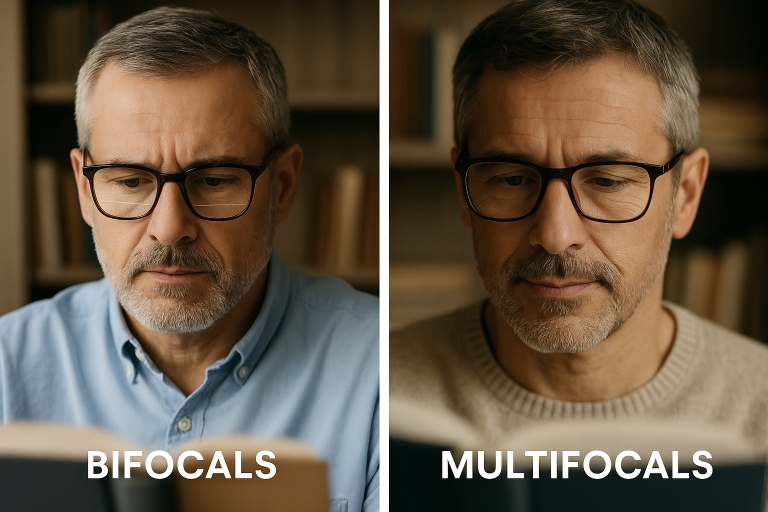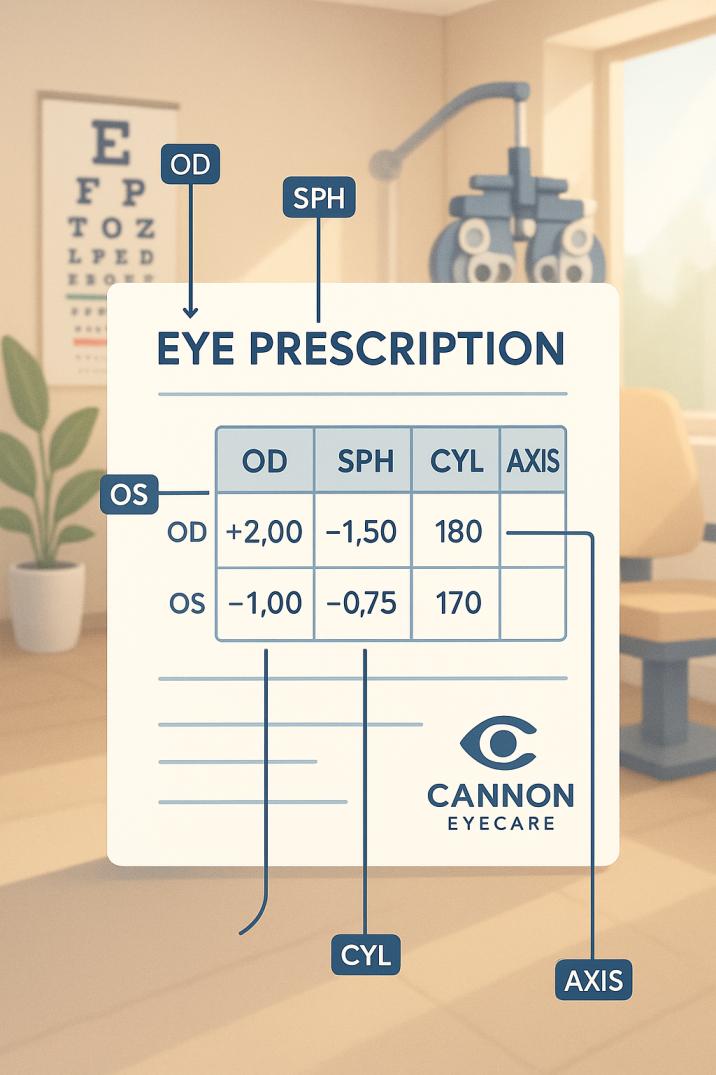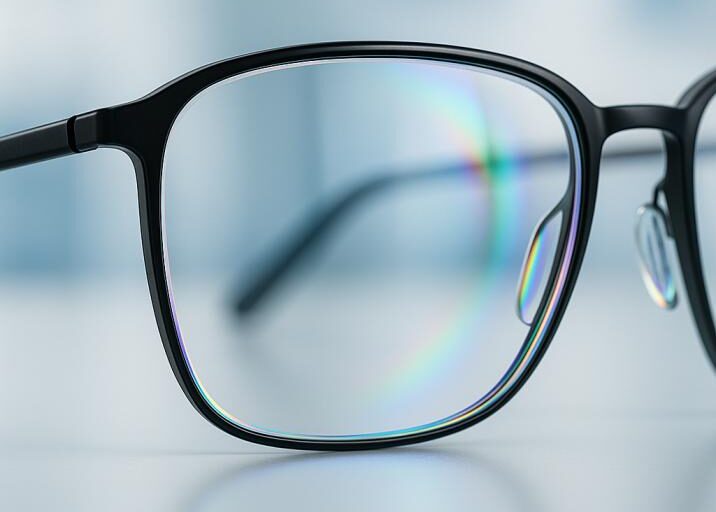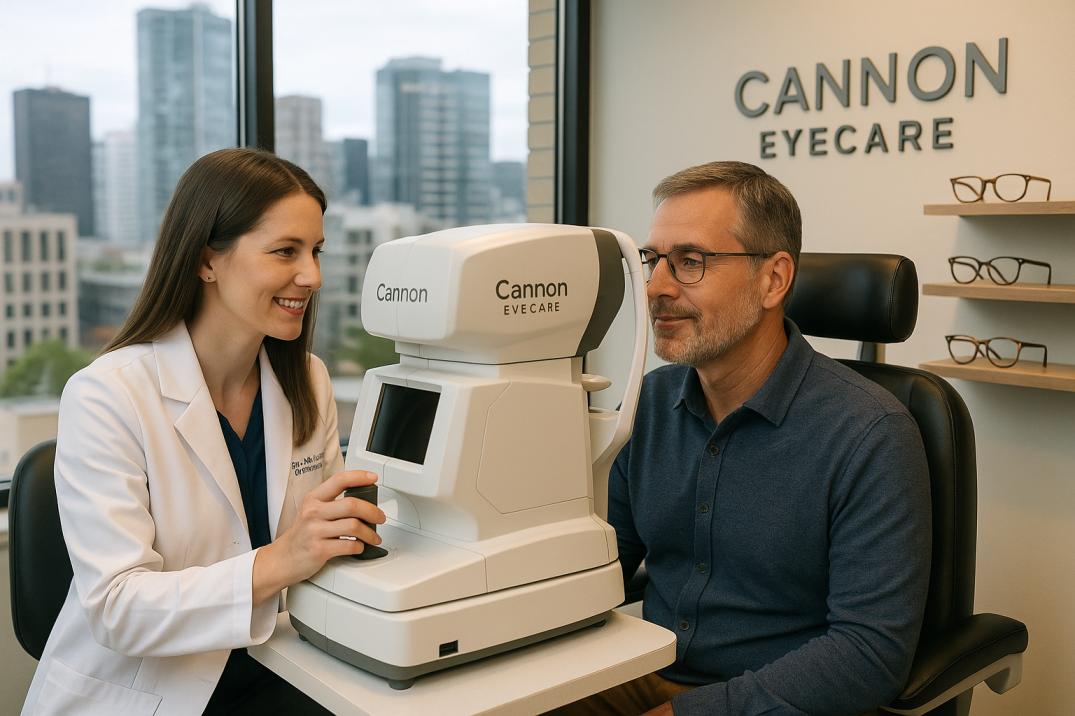Bifocals vs. Multifocals: Which Vision Fix Is Best?
Struggling to see both far away and up close? You might need bifocals or multifocals. At Cannon EyeCare in Seattle, our optometrists will personalize your solution for clear vision and comfort.
Key Takeaways: Choosing the Right Vision Solution in Seattle
-
Bifocals vs. Multifocals: Bifocals have two distinct lens zones with a visible line, while multifocals (like progressives) offer smooth, line-free transitions ideal for everyday tasks like computer use and driving.
-
Adaptation is Achievable: Most people adjust to new lenses or IOLs within 2–3 weeks (glasses) or 4–6 weeks (post-surgery). Consistent wear, proper technique, and patience are key.
-
Lifestyle Dictates Lens Choice: Office workers and active individuals often benefit more from multifocal, while bifocals can suit retirees or those with simpler visual needs.
-
Contact Lens Options Exist: Both bifocal and multifocal contact lenses are available for presbyopia—your choice depends on how natural a transition you want between vision zones and your adaptation tolerance.
-
Advanced Lens Technology Matters: Today’s lenses feature anti-glare coatings, blue light filters, and ultra-light materials—improving comfort, clarity, and durability.
-
Cataract Surgery Solutions: Intraocular lenses (IOLs) come in bifocal and multifocal types. Multifocal IOLs offer full-range vision, while bifocal IOLs provide strong near and far focus with reduced glare risk.
Bifocals vs. Multifocals: Key Differences
These lenses combine multiple prescriptions in one pair of glasses:
-
Bifocals: Correct distance vision (top) and reading (bottom) with a visible dividing line.
-
Multifocals (including progressives): Offer seamless transitions between prescriptions without lines—ideal for computer use.
How Bifocals Lenses Work
Traditional bifocals fuse a reading segment into the distance lens, creating a distinct line. Progressive lenses use a gradual “corridor” of power change for intermediate vision.
Adapting to Bifocals: 3 Simple Steps
-
Distance focus: Put glasses on; look straight ahead through the top lens.
-
Reading focus: Lower your eyes (not your head) to view through the bottom segment.
-
Position reading material: Hold books 16–18 inches away, angled slightly downward.
Practice daily to train your eyes!
Adjustment Timeline
Most wearers adapt in 2–3 weeks. You’ll naturally learn to:
-
Tilt your head for specific tasks
-
Shift eye position (not head movement)
Though challenging at first, patients report crisper vision and fewer lens switches are worth it!
How Multifocal Lenses Work
At Cannon EyeCare in Seattle, we use multifocal lenses to correct near, intermediate, and distance vision in one sleek design—no more switching glasses! Here’s the technology behind your clarity:
-
Power Zones: Multiple refractive powers embedded in a single lens.
-
Advanced Designs:
-
Concentric rings for defined vision zones
-
Aspheric surfaces for seamless power transitions
-
-
Brain Training: “Simultaneous vision” lets your brain prioritize the clearest image based on eye position.
Mastering Multifocals: Your Seattle Optometrist’s Guide
Most Seattle patients adapt in 1-3 weeks, though experiences vary. Common initial sensations include:
-
Peripheral blurriness
-
Mild image jumps during head movement
-
Temporary distortion at lens edges
4 Pro Adaptation Strategies
-
Start Slow: Wear 2-3 hours daily at home (practice reading + TV viewing).
-
Head Movement: Turn your head—not just eyes—to find optimal vision zones.
-
Progressive Challenges: Advance to computers → outdoor activities → driving.
-
Tech Advantage: Modern digital-surfaced lenses at our Seattle clinic speed up neuroadaptation.
Bifocal vs. Multifocal Lenses: Find Your Perfect Fit
Age-related presbyopia (blurred near vision) makes seeing clearly at all distances a challenge. If you’re weighing lens options, cannon EyeCare in Seattle will help match your lifestyle with the ideal solution.
Understanding Your Options
-
Bifocal Lenses:
-
Two distinct zones: distance vision (top) + near vision (bottom).
-
Best for: Simplified needs (e.g., reading + TV).
-
-
Multifocal Lenses (including progressives):
-
Smooth transitions between near, intermediate, and distance vision.
-
Best for: Dynamic tasks (computers, driving, sports).
-
Lifestyle Recommendations
-
Office Workers: Multifocals reduce eye strain during screen time.
-
Retirees: Bifocals excel for books/TV; add task-specific glasses if needed.
-
Active Lifestyles: Multifocals offers a seamless vision for driving, sports, and socializing.
Mastering Bifocals & Multifocals: Your Seattle Optometrist’s Guide
New to multifocal lenses? Initial challenges like image jump (bifocals) or edge blurriness (progressives) are normal. At Cannon EyeCare in Seattle, we help patients adapt smoothly with these proven strategies:
Common Challenges & Solutions
-
Image Jump:
-
Cause: Sharp prescription shift in bifocals.
-
Fix: Practice slow eye movements between zones.
-
-
Peripheral Distortion:
-
Cause: Multifocal lens curvature.
-
Fix: Turn your head slightly for side vision.
-
-
Eye/Head Coordination:
-
Key: Move eyes—not head—to switch vision zones.
-
4 Pro Adaptation Tips
-
Build Tolerance: Wear glasses 2-4 hours daily, increasing gradually.
-
Zone Practice: Tilt chin down slightly to read; lift to see far.
-
Optimal Reading Position: Hold materials 16-18″ away, angled 30° down.
-
Patience Pays: Most adapt fully in 2-3 weeks.
Bifocal vs. Multifocal Contacts: Your Seattle Optometrist’s Guide
Prefer contacts for presbyopia? cannon EyeCare in Seattle helps you choose between bifocal and multifocal lenses based on your lifestyle.
Key Differences
-
Bifocal Contacts:
-
Two distinct zones: near vision + distance vision.
-
Pros: Faster adaptation, cost-effective.
-
Cons: Less natural transition between zones.
-
-
Multifocal Contacts:
-
Gradual power transitions across multiple distances.
-
Pros: Natural vision for dynamic tasks.
-
Cons: Longer adaptation period, higher cost.
-
Essential Care Tips
-
Clean rigorously: Use only solutions recommended by your optometrist.
-
Replace timely: Follow schedule (daily/biweekly/monthly).
-
Check-ups: Visit Cannon EyeCare every 6 months for fit and eye health assessments.
Next-Gen Bifocal & Multifocal Tech: Clearer Vision in Seattle
Experience revolutionary lens advancements at Cannon EyeCare—where Seattle patients enjoy unprecedented clarity and comfort.
4 Breakthrough Features
-
Digital Precision Surfacing:
-
Tailor’s power zones to your exact prescription for razor-sharp focus.
-
-
Anti-Reflective Pro Coating:
-
Eliminates glare/halos during night driving or screen use.
-
-
Blue Light Defense:
-
Filters digital strain at the lens level (no add-on needed).
-
-
FeatherLight Materials:
-
Ultra-thin, flexible designs for 18-hour comfort.
-
Transformative Benefits
-
Crystal-clear vision at all distances
-
72% less eye fatigue (clinical study data)
-
Sleek, line-free aesthetics
-
Scratch-resistant durability lasting 2X longer
Bifocal vs. Multifocal IOLs: Your Seattle Cataract Solution
For Seattle cataract patients, intraocular lenses (IOLs) restore multi-distance vision during surgery. At Cannon EyeCare, our surgeons help you choose between bifocal and multifocal IOLs based on your daily needs.
IOLs Explained
-
Replace clouded lenses during cataract surgery
-
Bifocal IOLs: Two focal points (near + distance)
-
Multifocal IOLs: Full range (near, intermediate, distance)
Choosing Your IOL: Key Differences
At Cannon EyeCare in Seattle, we guide cataract patients through critical lens differences:
-
Multifocal IOLs:
-
Benefits: Seamless vision from reading to driving distances
-
Considerations: Potential night halos or reduced contrast sensitivity
-
-
Bifocal IOLs:
-
Benefits: Crisp near/distance vision with lower glare risk
-
Considerations: Limited intermediate clarity (e.g., computer screens)
-
Post-Surgery Expectations
-
Adaptation: 4-6 weeks to adjust (similar to glasses)
-
Glasses Use: May still need them for specialized tasks
-
Follow-ups: Crucial 1/3/6-month checkups at our Seattle clinic
FAQs
-
What are bifocal and multifocal lenses used for?
-
They correct vision at multiple distances, helping you see clearly both near and far without switching glasses.
-
-
How do multifocal lenses work to improve vision?
-
Who is a good candidate for bifocal contact lenses?
-
How long does it take to get used to multifocal glasses?
-
Can I wear bifocal or multifocal lenses if I use a computer a lot?
-
Why do bifocal glasses have a visible line?
-
Are multifocal contact lenses harder to fit than regular contacts?
-
What is the difference between bifocal and multifocal lenses?
-
How do I clean and care for multifocal contact lenses?
-
Can bifocal glasses cause headaches or dizziness?
-
Are progressive lenses the same as multifocal lenses?
-
Can children wear bifocal lenses for vision problems?




